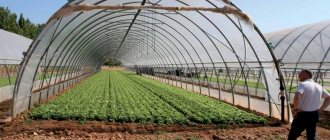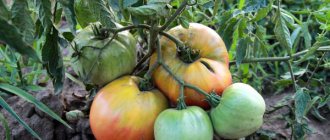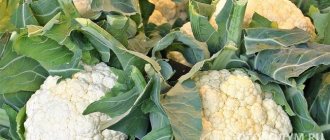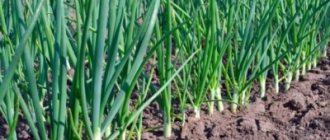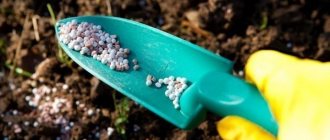Working for yourself in rural areas has many advantages and disadvantages. Business in the village does not end with raising livestock, poultry, and fruits and vegetables. There are several dozen options for entrepreneurship in the village; novice businessmen can choose the one that suits their budget and skills.
The main disadvantage of the greenhouse business
The very first thing that can bring any greenhouse project into the red is heating the greenhouse. Heating a brick house and a polycarbonate greenhouse is not the same thing. For example, heating a house of 50 square meters. m costs 2500 rubles/month in winter, then a thin greenhouse of the same area will cost 5–10 times more. Even in the southern regions, farmers do not keep greenhouses all year round, but open the season only in February - March. A similar arrangement goes with greenhouse lighting. Dim light like in an apartment definitely won’t work. Plants in the cold season need the same daylight hours as they receive in the warm season. The light must be bright, and this means very high energy costs. What can I say, even growing tomatoes on a windowsill requires additional light. Someone may object: “Well, we will sell the product at a high price, look how much a tomato costs in February.” Prices that can be observed in grocery chains should not be a guide. Vegetables and herbs are sold in bulk at almost half the price shown on the shop window. This happens because retail has its own costs associated with logistics, markdowns, taxes, salesperson salaries, and so on. Do you want to trade without intermediaries, and in a wide variety of goods? Now this is not a problem at all, you can place your ad on Avito. Find out how to get a stable income from ads, what is better to sell on the Internet and what is the best way to make money.
Bulbous flowers on March 8
There are few things that can bring joy on a cold spring day like fresh flowers. And even though few people these days will be surprised by a bouquet of tulips on March 8, bulbous flowers, which are sold directly in pots, do not lose their popularity. So why not take advantage of the excitement and try to make flowers at home for the spring holidays?
The procedure for forcing bulbous plants is not particularly complicated. Most often, various varieties of tulips, hyacinths and daffodils are used for these purposes. If you are not too confident in your abilities, try starting with hyacinths and crocuses.
- 7 secrets to successful forcing of bulbous flowers
Do you dream of admiring the blooming primroses in winter? Then it’s time to start forcing bulbs.
How much money do you need to start a successful business growing vegetables and plants in a greenhouse?
Worth considering! If a farmer does not have any experience in growing a particular crop, he will not be able to obtain the required volume of products and the losses will be enormous.
Of course, this does not mean that year-round cultivation in greenhouses in temperate climates is impossible. It is quite possible and there are many similar farms. But all such projects cost a lot of money and are naturally beyond the means of a small farmer. Before starting any business, it is advisable to learn how to manage money. Think about your future today. Go to a money management marathon and learn about the secrets of rich people and where to invest money to receive stable passive income.
Amaranth is the most profitable crop in the Volga region based on the results of 2018
Amaranth is harvested on the farm by direct harvesting. Thanks to the rapeseed table, there is no grain loss. Last year, in conditions of severe drought, Seeds CJSC received 15 c/ha fallow. Despite the recommendations of Lydia Miroshnichenko, desiccation is not done; the crop dries out completely on the vine. Herbicide treatment is also not required.
“We sold our amaranth for 49 rubles per kilogram,” says Dmitry Rogoza. – This is a very good price – the profitability is about 300%. We have already signed a contract for the current year with a price of 50 rubles/kg. We want to get 20 centners per hectare. Knowing the price for next year is very important; this is not the case for any other crop,” the agrarian sums up.
When is the best time to start a greenhouse business?
What can be concluded is that profitable greenhouse cultivation should begin with small volumes and before the opening of the season. The main task of the greenhouse is to obtain a harvest several weeks days earlier than a similar product appears on the market from summer cottages. Prices will still be very attractive, and demand will be high, so you can sell the product without any problems. A small greenhouse, firstly, will not bankrupt the farmer if he fails. And secondly, it will allow you to evaluate the market and make it clear whether this business is worth pursuing or not.
Despite the frost and heat
...Breeder, Doctor of Agricultural Sciences Vasily Balashov has been studying chickpeas for more than 50 years. During this time, he not only thoroughly studied the characteristics of this crop, but also developed several popular varieties cultivated on tens of thousands of hectares: Volzhanin, Volgogradsky 10, Volgogradsky 50 and others.
According to the scientist, chickpeas are one of the most drought-resistant and popular crops on the market.
“I started doing it back in Kazakhstan, we wanted to grow all the leguminous crops that were available in the USSR,” says Vasily Balashov. – True, they found only 18, but among them were chickpeas. We sowed them in 1963 and got good seedlings. And on May 10, snow fell and nine degrees of frost hit. Only peas and chickpeas remained on the field. In addition, summer brought heat and dust storms. During the bean formation phase, the temperature was 40 degrees. As a result, the peas stopped living, but the chickpeas produced a good harvest.
Soon after, the scientist moved to Volgograd and concentrated his efforts only on chickpeas. The first direction of selection was the creation of early ripening varieties. The initial growing season was 85-90 days, and during the heat the chickpeas “burnt”, leaving half of what was sown in the field before harvesting.
“To create early ripening, we took Afghan varieties,” recalls Vasily Balashov. “He gave us a growing season of 65-67 days and good yields. This is how the Volgogradsky 10 variety appeared. Further, we developed chickpeas for disease resistance and increased productivity. And, in principle, they succeeded in this: our chickpeas began to get sick only in 2016-2018, but not because they lost resistance to infection, but because the hydrothermal conditions changed. Chickpeas have found themselves in a different situation, and now we have to remake old varieties in a new way...
Greenhouse plant growing technology
So, let's move on directly to revealing the main question of our topic - which plants are most profitable to grow in a greenhouse? And here is our TOP 5 best greenhouse ideas.
Seedling
Oddly enough, growing seedlings is one of the most profitable ideas for a greenhouse. In spring, the demand for seedlings is widespread - they are bought by both owners of summer cottages and adjacent areas, as well as other farms specializing in crop production. There can be a lot of options here. Take, for example, strawberry seedlings. In the fall, you can prepare frigo seedlings (for more information about frigo seedlings, read the article “Strawberry business - 4 ways to grow strawberries profitably”), and in the spring, plant these seedlings in a greenhouse and sell them over the course of several months. Up to several hundred roots can be safely placed on one square meter. The retail price of one bush, depending on the variety, ranges from 50 to 100 rubles. We sold 10,000 roots and earned over 500 thousand rubles. To be convinced of the real demand for strawberry seedlings, just look at the statistics of Yandex search queries. Thus, according to Wordstat data, the phrase “buy strawberry seedlings” is searched about 18,000 times in April alone. Of these, Moscow accounts for just over 4,000 requests. This suggests that seedlings can be sold not only through markets and nurseries, but also via the Internet.
The same can be said about seedlings of flowers (petunias), tomatoes, cabbage. The demand is colossal.
Vegetables
Cucumbers and tomatoes are the most proven greenhouse crops. Vegetables are bought always and everywhere, regardless of the crisis. The big advantage of cucumbers is that they can be stored for quite a long time. The harvested crop can be stored for weeks, although fresh cucumbers sell out very quickly. Especially if it is grown in the same region where it is sold. The yield of greenhouse cucumbers and tomatoes, with proper technology, is 30 - 45 kg per square meter. m. Greenhouse for 300 sq. m. can bring up to 12 tons of vegetables per season. In 2016, in the month of May, cucumbers in our stores (Ulyanovsk) cost an average of 80 rubles/kg. If for some reason it is not possible to come to an agreement with vegetable kiosks and grocery stores, then you can sell the goods on your own without any problems. If the farm has a spacious car, then you can simply stand by the road with good car traffic, hang up a sign “vegetables from private household plots”, indicate a price tag slightly lower than store prices and there will be no end to customers. You can distribute business cards to each buyer and soon you will be selling products directly from your greenhouse plot.
Flowers
A slightly more complex and rather southern version of the greenhouse business is the idea of \u200b\u200bgrowing cut flowers. The primary task in this case is to get the main harvest by the March and then May holidays. How much can you earn here? Thus, modern technologies for growing roses make it possible to obtain up to 250 cuts per year from one bush. Up to 4 bushes can grow freely on one square meter. That is, from 1 sq. m. 1000 sections are collected per year. Greenhouse for 100 sq. m. will allow you to grow up to 100 thousand sections! The average wholesale price for one rose cut is 40 rubles. By simple calculation, we get annual revenue of 4 million rubles. This is a lot of money, and even taking into account the high costs of maintaining a greenhouse, the profit remains high. There are, however, several serious pitfalls that hinder the widespread development of this business. Firstly, flowers, and especially roses, are very capricious and require special care. Slight deviations from the norm - the flowers turn out to be frail and not marketable. Secondly, the costs of creating greenhouse conditions for growing flowers are slightly higher than in the case of vegetables. Finally, thirdly - sales! Flowers today are grown by more and more farmers, and the lion's share of the goods comes from abroad. The competition is extremely high and not everyone can survive in it.
Strawberry
In more southern regions (Krasnodar Territory, Kuban), growing strawberries in a greenhouse is quite common. Today, there are several effective technologies for growing strawberries in greenhouses: Dutch and Israeli technology, vertical beds (trukars), growing frigo seedlings, hydroponics. For some of them, it is possible to achieve a yield of 30 tons per hectare. In the south, fresh strawberries can be seen on the shelves as early as May. But in the central and Volga regions, finding locally produced early strawberries is not an easy task. This happens due to the fact that the berry has an extremely short shelf life (only 2 days) - it simply does not reach solvent buyers in the northern regions. And the one that arrives, as a rule, is prohibitively expensive and doesn’t really look like a berry. On May 25, I decided to “monitor” the prices for strawberries in our city (Volga region) and somehow found a berry on sale, which, surprisingly, was delivered from Uzbekistan. Price - 350 rubles/kg! And surprisingly, people took it. What can we conclude - at such prices, growing strawberries in a greenhouse, even in a temperate climate, looks like a very promising idea. You can start small - with a greenhouse of 50-100 square meters. m. Even with primitive technology using drip irrigation and agrofibre, you can get a good harvest 10 - 12 days earlier than the summer berries. And this will be enough to sell strawberries at a high price. Even 200 rub. per kilogram will allow you to gain profit. When will people see imported berries for 350 rubles? and local for 200 rub. their choice will be obvious.
Greenery
Growing greens in a greenhouse can be a profitable business. First of all, these are: onions, lettuce, parsley, dill, cilantro, basil and sage. The big advantage of greens is that, unlike other greenhouse crops, the period from sowing to harvest is the shortest here. So, onions, spinach and parsley can be obtained within 30 - 35 days after sowing. The yield with hydroponics technology can be up to 6 kg per 1 sq. m. And the price per kilogram, as you know, reaches 200 rubles in the spring. per kg. In just three to four months, you can harvest up to three harvests. Another advantage of growing greens is the cost of planting material. They are essentially “penny”, unlike strawberries or flowers. The only difficulty that will certainly await any entrepreneur is the sale of products. You won’t be able to get into retail chains, the volumes are wrong, and the entry price may not be profitable. Many farmers find a way out by selling greens to public catering establishments: cafes, restaurants and canteens. Such organizations are always happy to cooperate, since in their activities they are constantly faced with the problem of supplying ingredients.
We recommend:
21 working business ideas on how to make money in real estate.
Tips for beginner businessmen
To properly organize a greenhouse business, use these recommendations:
- It all starts with an idea. Monitor the market and find out what is most in demand in your region and at what time of year.
- Create a business plan. Calculate the costs of constructing and equipping a greenhouse, seeds and fertilizers, utility costs, etc.
- Think in advance about marketing your harvest. An excellent option is to enter into an agreement with catering establishments and shops. This way you will be sure that the products will not be left behind or spoiled.
- Farm products can be sold online. Of course, this is unlikely to be possible with tomatoes, but with strawberry seedlings it is quite possible.
- The modern trend is organic vegetables grown without harmful “chemicals”. This can become a signature feature of your business. True, many farmers claim that such work requires significant effort and financial investment. Organic fertilizers and growth stimulants are not cheap. It is advisable to occupy this niche if you are confident in stable consumer demand for your products.
In a heated and heated greenhouse, crops are protected from the vagaries of the weather. But the costs of maintaining the greenhouse will be considerable. Like other types of entrepreneurship, growing vegetables, flowers, and herbs is associated with risks and expenses. Such a business can be made profitable if you draw up a competent plan at the initial stage and try to take into account all the nuances.
How much can you earn
In this type of business, it is difficult to calculate income, since some individual entrepreneurs already have greenhouses, while others will make investments in their construction, and income also depends on the size of the greenhouse. A sample business plan would look like this. To grow seedlings you need:
- Greenhouse (film or made of polycarbonate), area 18 sq.m. If you grow seedlings in two tiered boxes, then the usable area doubles and is 36 sq.m. This area yields 7,500 cups of seedlings. The cost of one cup of seedlings ranges from 8 to 15 rubles, depending on the region. Thus, 7,500 glasses of at least 8 rubles will bring an income of 60,000 rubles.
- Purchase of varietal seeds and bulbs with a germination rate of up to 80%. The cost of one seed is approximately 12 kopecks per piece. For growing 7,500 pcs. 9,000 seedlings need to be purchased. seeds, 1,080 rubles will be spent on this.
- Purchase of soil for cups, approximately 10 cubic meters. will be 8,000 rubles.
- The cost of 1 glass is 1.8 rubles, in total you will need 13,500 rubles.
- Heating a greenhouse during the period of seedling growth will cost 2,000 rubles.
Total expenses will be: 1,080+8,000+13,500+2,000= 24,580 rubles. Net profit will be 35,420 rubles. (For more details, read the article “Greenhouse Business Plan”) Which OKVED should you indicate for the purpose of registering OKVED 2 Section A: agriculture, forestry, fishing and fish farming. OKVED 2 01 Plant and animal husbandry, hunting and the provision of related services in these areas. OKVED 2 01.3 Growing seedlings OKVED 2 01.30 Growing seedlings
What is the seeding rate for chickpeas?
“We usually choose medium-sized seeds for sowing, discarding the largest and smallest ones,” says Vladimir Kalyuzhny. – For the Volgogradsky 10 variety, the weight of a thousand seeds is 240-270 grams, per hectare – 600 thousand pieces. Productivity – 23 c/ha. But this is all in our zone, Zhirnovsky district of the Volgograd region, wolf corner.
The Volzhanin variety, our norm is up to 400 thousand seeds per hectare, the weight of a thousand is 340-380 grams. We sow it with a line. Productivity – 30 c/ha in the breeding nursery, first and second year. Finally, Volgogradsky 50: continuous sowing, up to 350 thousand beans per hectare. Here, precise seeding is desirable, with row spacing of 45 cm.
Tax system
This business relates to the production of agricultural products, therefore a taxation system for agricultural producers, the so-called single agricultural tax, is applied. (ESKHN). The main condition of this tax is that the revenue from the sale of these products is at least 70% of the total revenue, and also that the enterprise must be engaged in the production of agricultural products, and not in their sale. The Unified Agricultural Tax is calculated as follows: StxB, where St is the tax rate, B is the tax base. The tax rate is 6%, and the tax base is calculated from income received in the reporting period, minus expenses.
Professional business plans on the topic:
- Farm business plan (45 sheets) - DOWNLOAD ⬇
- Plant nursery business plan (25 sheets) - DOWNLOAD ⬇
- Business plan for growing potatoes (15 sheets) - DOWNLOAD ⬇
What are the nuances of cultivating the crop?
“We sow it to a depth of one and a half to two centimeters,” says Rogoza. “It can be quite difficult to “catch” the seedlings; the breeze blows and there is no moisture in the top layer. Because of this, we sow at the end of April and manage to finish everything before May 9th. If later, there is a risk of losing moisture. It is also undesirable to sow deeper: you will get uneven seedlings. We sow in a wide-row method, 70 cm, using a small-seeded vegetable seeder. The seeding rate ranges from 700 grams to kilograms per hectare. Seeds cost an average of two thousand rubles per kilogram - we took them from Russian Olive. An important detail: the seeds need to be treated against pests; last year our crops were eaten by the beet bug, which caused a slight decrease in yield.
Permissions to open
For this type of activity, the seedling seller must obtain sanitary phytocertification. You can get it from the sanitary inspection. It is also necessary to register the enterprise with government authorities, register with the tax office as an agricultural producer, purchase land or enter into a lease agreement. In fact, there are still a huge number of ways to get rich. The author of this blog writes in great detail about these methods in an article about methods of investing and starting a business.
( 17 ratings, average: 4.00 out of 5)
Loading…
Similar business ideas:
- The best business ideas for a village
- TOP 30 business ideas with minimal investment
- Growing tobacco for sale as a business
- TOP 30 business ideas without investment
Flower seedlings for sale
Please note that seedlings of ornamental crops are no less in demand among summer residents. Don’t underestimate the “ordinary” flowers that seem to be found in every area. There are, of course, flower growers among summer residents who hunt for picky plants like eustoma, but in most cases they are interested in seedlings of “classical” crops, such as petunia, lobelia, snapdragon, etc.
Someone missed the sowing time, someone made mistakes in care, and someone simply does not have the opportunity to grow seedlings for a flower garden at home. Typically, seedlings of annuals sell well in the spring, when it is time to plant flowers in open ground, while perennials can be popular throughout the season.
- Growing viola for sale - master class with photos
Do you want to earn extra money? Have time to sow viola seedlings now. And we'll tell you how to do it.

